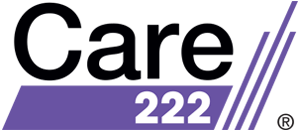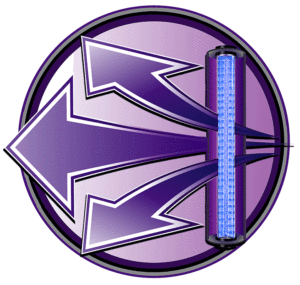Ultraviolet light (wavelengths between 100nm and 400 nm) has well-known sterilization capability as it can damage the proteins and genomic material of bacteria and viruses through the disruption of DNA and RNA chemical bonds and cell proteins. Most commonly used are 253.7 nm mercury based UV lights and 260~265nm UV LEDs. Both of which have been widely used in this war against COVID-19. [1]
Hospitals often use mercury based 253.7 nanometer (nm) ultraviolet (UV) light to kill microbes in empty rooms when humans are absent, because the UV light can cause erythema to skin and keratitis to our eyes.
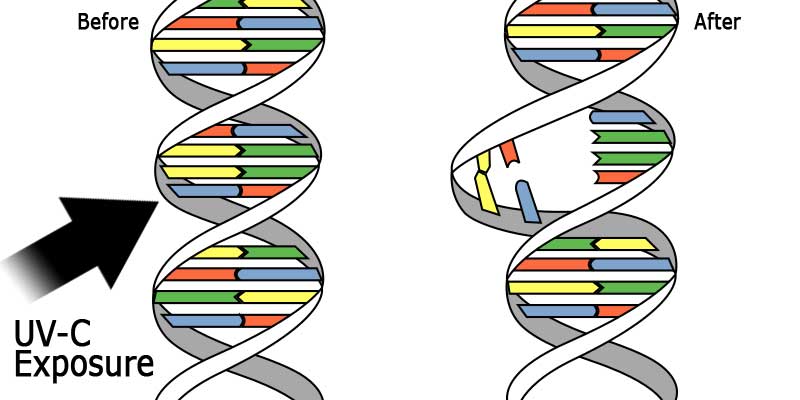
At the Center of Radiological Research in Columbia University Irving Medical Center (New York City), Dr. Brenner and his team discovered that excimer lamps producing single-wavelength photons range from 200 to 230 nm UV (“Safe Zone UV”, "Far-UVC") are lethal to viruses but do not reach or damage any living cells in human body. This is because the Safe Zone UV cannot penetrate the dead-cell layer (skin stratum corneum) at the surface of our skin, nor can it penetrate into our eyes (occular tear layer). This makes it an ideal solution to keep airborne virus under control in public spaces. UV-222nm excimer lamp is currently most commonly used as it is can generate more efficient light output than 207nm.
Reference:
[2]D Welch, M Buonanno, V Grilj, et al. Far-UVC light: a new tool to control the spread of airborne-mediated microbial diseases, Sci Rep, 8 (2018), p. 2752
[3] Kitagawa, H. et al. Effectiveness of 222-nm ultraviolet light on disinfecting SARS-CoV-2 surface contamination. Am. J. Infect. Control, in press (2020).
[4]M Buonanno, B Ponnaiya, D Welch, et al. Germicidal efficacy and mammalian skin safety of 222-nm UV light, Radiat Res, 187 (2017), pp. 483-491
222nm UV can effectively kill bacteria,including SARS-CoV-2 and its mutation strains.
UV uses two mechanisms to fight off pathogens. The commonly used 253.7nm wavelength UV lights contains mercury vapor,
and latest 265/280nm UV LED inactivate pathogen mainly because the thymine in DNA and uracil molecules in RNA absorb the ultraviolet energy and undergo a chemical change. This change kills the cells due to structural damage and prevents the pathogen from reproducing.
UV sterilizes the COVID-19 virus in the same way. [5] However, a wide variety of microbes can repair their DNA damage and “reactivate” themselves using ordinary blue light in a process called photo-reactivation. [6] So, the tip is avoiding blue light after you use UV lights.
Under this mechanism, UV 222nm is nearly as effective as 253.7nm. The most effective wavelength is 265nm.
Another mechanism to fight off panthogens is to alter protein inside cells. In this approach, 222nm is nearly 10x more effecient than other commonly used wavelength. There is no evidence showing that photo-reactivation helps cells recover after protein damage.
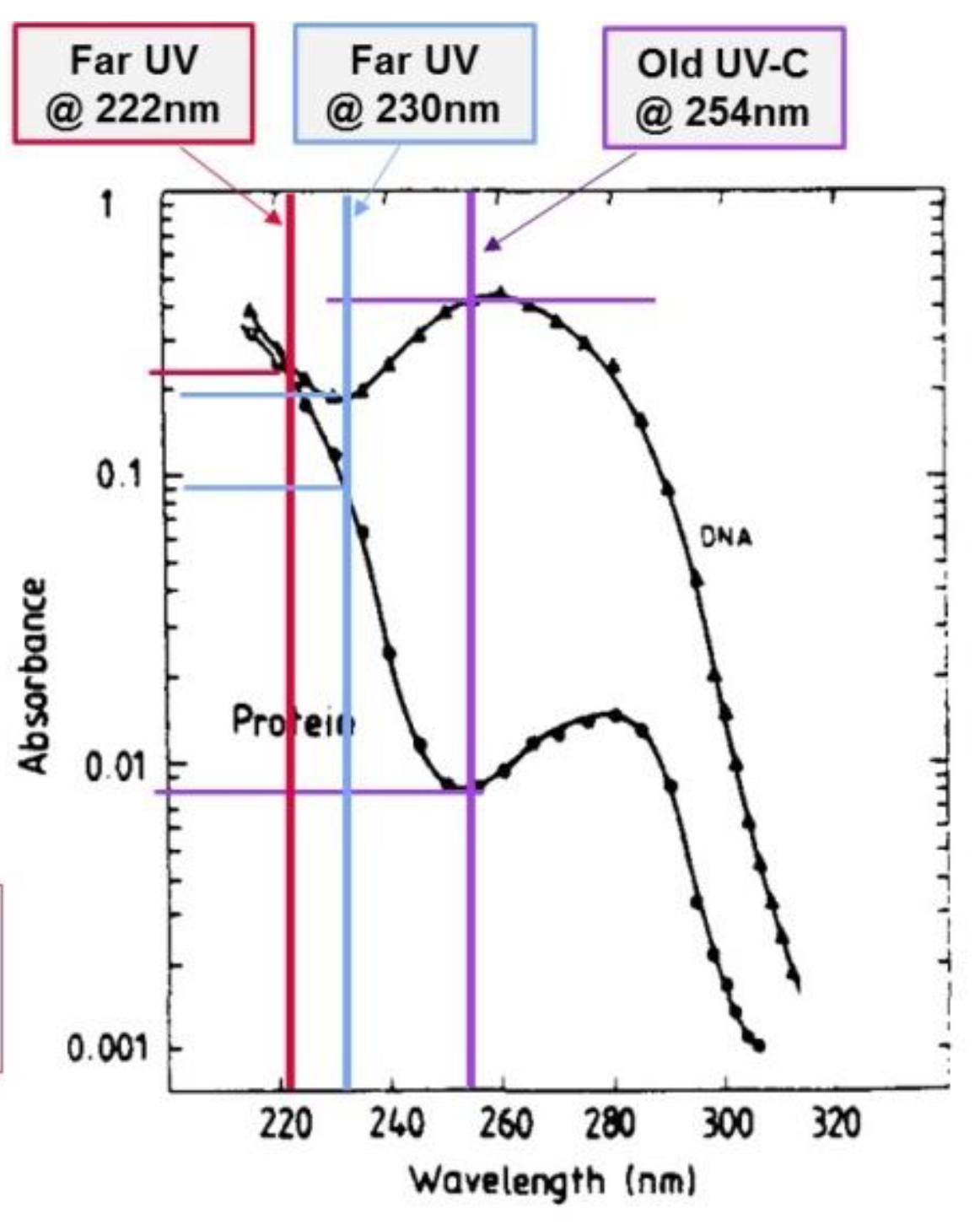
222nm UV can effectively kill bacteria, including COVID-19 and its mutations.
UV uses two mechanisms to fight off pathogens. The commonly used 253.7nm wavelength UV lights contains mercury vapor,
and latest 265/280nm UV LED inactivate pathogen mainly because the thymine in DNA and uracil molecules in RNA absorb the ultraviolet energy and undergo a chemical change. This change kills the cells due to structural damage and prevents the pathogen from reproducing.
UV sterilizes the COVID-19 virus in the same way. [5] However, a wide variety of microbes can repair their DNA damage and “reactivate” themselves using ordinary blue light in a process called photo-reactivation. [6] So, the tip is avoiding blue light after you use UV lights.
Under this mechanism, UV 222nm is nearly as effective as 253.7nm. The most effective wavelength is 265nm.
Another mechanism to fight off panthogens is to alter protein inside cells. In this approach, 222nm is nearly 10x more effecient than other commonly used wavelength. There is no evidence showing that photo-reactivation helps cells recover after protein damage.
UV radiation dose required to kill pathogens varies.
Size matters. As explained by Dr. Brenner, a bacterial cell is normally less than 1μm in diameter, while human cells are between 10 to 30 μm in diameter. Thus, UV light of certain low wavelength might be able to penetrate a bacterial cell and kill it, but not be able to penetrate a human cell or penetrate it at a small depth as to not damage it. Pathogens, being generally less than one micron in diameter, are fully penetrated by 222 nm light, resulting in killing of the pathogen[7]. Due to the cell size [9] and structure difference (e.g. cell wall thickness), dose required to inactivate and kills virus is case by case.
Joint study by Hirosaki University and Ushio shows UV 222nm radiation dose varies for bacteria, for example, 15 mJ/cm² for MRSA, 44 mJ/cm² for Bacillus cereus (spore) and no more than 6 mJ/cm² for H1N1 virus, to achieve 99.9% reduction.
Reference:
[9] Cell size and Scale
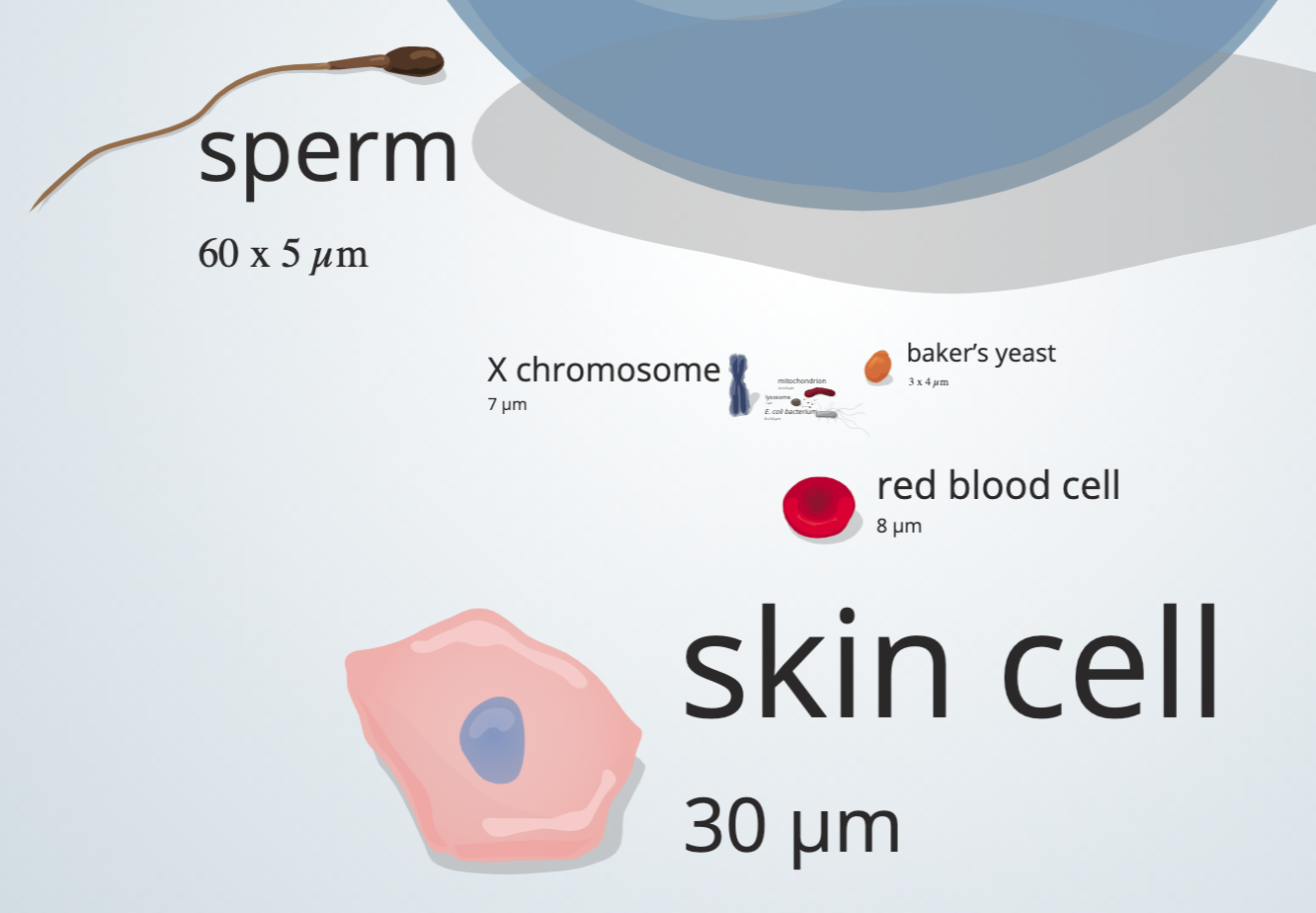
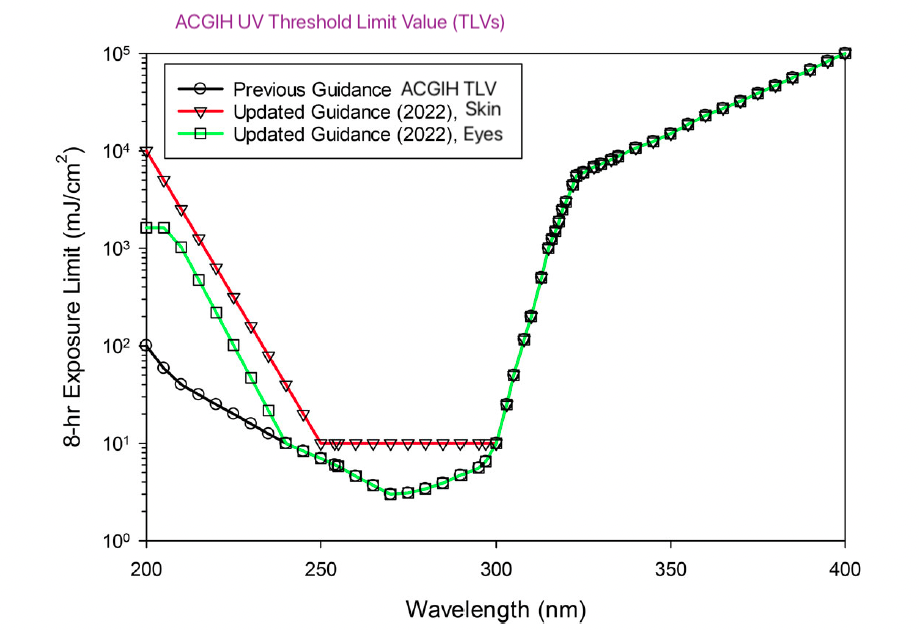
UV 222nm is potentially safe to use regularly.
Safety is the primary concern when using to prevent airborn virus, and is the unique advantage for Far-UV over 253.7nm and other wavelength. Far-UV light has a penetration range of only a few micrometers when interacting with cellular system components and thus cannot reach the genetic material of living mammalian cells [7]. Kobe University and Ushio joint study shows irradiation of filtered 222nm UV-C light on Human Skin Reduces Bacterial Counts While Causing No Skin Damage.[10] Various studies on mice and human skin models showed no signs of damage for Far-UVC. [11,12]
There are no US Government regulatory UV radiation exposure limits. However, a non-governmental organization, the American Conference of Governmental Industrial Hygienists (ACGIH), publishes Threshold Limit Values(TLVs), which are recommended exposure limits over an eight-hour day and are widely used as a guideline. The UV exposure limits are wavelength dependent and recommended TLV by ACGIH (revised in 2022) for 222nm is 160.7 mJ/cm² for eyes and 479 mJ/cm² for skin.
The Global Lighting Association has published two documents on the topical issue of UV-C lighting, emphasising that UV-C is now a proven technology in the battle against COVID-19.
Reference:
[10]Fukui T, Niikura T, Oda T, Kumabe Y, Ohashi H, et al. (2020) Exploratory clinical trial on the safety and bactericidal effect of 222-nm ultraviolet C irradiation in healthy humans. PLOS ONE 15(8): e0235948.
[11] Sachiko Kaidzu, Kazunobu Sugihara, Masahiro Sasaki, Aiko Nishiaki, Tatsushi Igarashi & Masaki Tanito (2019) Evaluation of acute corneal damage induced by 222-nm and 254-nm ultraviolet light in Sprague–Dawley rats, Free Radical Research, 53:6, 611-617, DOI: 10.1080/10715762.2019.1603378
[12] K Narita, K Asano, Y Morimoto, T Igarashi, A Nakane, Chronic irradiation with 222-nm UVC light induces neither DNA damage nor epidermal lesions in mouse skin, even at high doses, PLoS One, 13 (2018), Article e0201259
Safe Zone UV is getting accepted in various industries to provide a healtheir working environment.
Boeing started evaluating this technology since 2017, and plan to use it in cabinets.
American Department of Defence(Air Force)Defense Systems Information Analysis Center uses 222nm germicidal solution for disinfection, and research approaches to fast deploy this technology.
Magnolia Bakery at Manhattan (NYC) installing disease-destroying UV lights to protect customers in cupcake shopping.
Nature’s Path, North America’s largest certified organic breakfast and snack food company has become the first food manufacturer to install Far-UVC 222nm light technology in its North American production facilities.
Koelsch Becomes First Senior Living to Install Breakthrough, Far-UVC 222 Light Sanitizing Technology in IL, TX, and MT.
Boll & Branch Becomes First Retail Store to Install New, State-of-the-Art Far-UVC Sanitizing Technology.
There are more and more Safe Zone UV 222nm providers, including Ushio, Sterilray, Eden Park Illuminations, Quark, and our UVCleen®.
